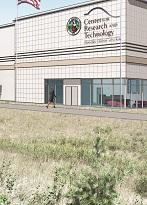
As the data center industry becomes more sophisticated and established, utilities, economic developers and real estate providers need to respond accordingly. Data center operators increasingly require partners who understand the unique business structures, infrastructure requirements and operating standards that drive their business.
Biggins Lacy Shapiro & Co. (BLS), a consulting firm specializing in location economics, has recently established a data center site qualification program to help companies with data center location needs. Its objective is to inventory and conduct rigorous due diligence on sites most likely to be of interest to a data center operation — that is, those that offer robust electrical and fiber infrastructures, low disaster risk, competitive power rates, and favorable property and sales tax structures and competitive economic development incentives.
While there is no perfect data center site, the role of BLS is to help companies find sites best suited to their needs and evolving industry requirements.
 Trends: Data Center Requirements
Trends: Data Center Requirements
There are a number of new trends we are seeing in the data center location industry, including the requirement for more power. Whereas previously data centers may have required only 100W or 150W per square foot, today’s data centers are between 200W and 300W per square foot.
Additionally, some companies are paying more attention to the attractiveness of the location and the building itself, as they increasingly need to attract top IT talent to work at the facility. This is because of the trend toward co-location facilities: companies often want to be able to co-house IT staff and vendors with the servers.
Also, time schedules for data center location projects are getting shorter. Companies simply cannot wait while a utility or economic development organization looks for a site that, even if found, hasn’t been vetted. They want fast answers and a high level of confidence that there won’t be any deal-crashing surprises during the due diligence phase.
Overall, data centers have unique operational issues including extremely high redundant and reliability requirements, ramp-up considerations, reserved capacity issues, cost of service and revenue credit considerations, all at reasonable prices. Companies often can benefit significantly by partnering with a utility that understands the industry and is continually working to adapt its tariffs and cost-to-serve structures to the unique needs of data centers.
Evaluation Process: Working with AEP
Perhaps the best way to understand how BLS & Co. goes about qualifying data center sites is to use a case study as an example, such as BLS’s recent rollout of nine data center qualified sites for American Electric Power, a utility company representing an 11-state territory.
In this case, BLS started by asking the question: What criteria are important to corporate clients when they’re siting a data center? The answers included redundant electric supply with available capacity, access to long- and short-haul fiber providers, freedom from basic man-made and natural disaster risks, an existing zoning designation that allows data center use and the ability to complete construction within 18 months. BLS also reviewed water availability, electric costs, tax policy, exemptions and incentives, demographics, vendor/supplier networks and a host of other considerations. In addition to its own internal location consultants and its energy affiliate Sugarloaf Associates, BLS brought in an independent engineering firm that specializes in mission-critical facilities to review the sites.
 Data center location searches begin with an unrelenting list of requirements. In the experience of BLS, by the time you rule out all areas with any chance of flood, hurricane, tornado, ice, wildfire, earthquake or lightning and rule out all areas near a rail line, gas transmission line, oil pipeline and nuclear generation site, there’s not much left. And you haven’t even factored in the availability or cost of power, fiber or water yet. This means that at some point along the line, compromises are made regarding minimum criteria, and these compromises are very unique to each potential user. Therefore, BLS spent less time policing for minimum criteria and more time asking and answering the questions it knows data center operators will have so they can quickly assess the site’s potential for a specific project.
Data center location searches begin with an unrelenting list of requirements. In the experience of BLS, by the time you rule out all areas with any chance of flood, hurricane, tornado, ice, wildfire, earthquake or lightning and rule out all areas near a rail line, gas transmission line, oil pipeline and nuclear generation site, there’s not much left. And you haven’t even factored in the availability or cost of power, fiber or water yet. This means that at some point along the line, compromises are made regarding minimum criteria, and these compromises are very unique to each potential user. Therefore, BLS spent less time policing for minimum criteria and more time asking and answering the questions it knows data center operators will have so they can quickly assess the site’s potential for a specific project.
Once BLS had its preliminary recommendations in place, its independent engineering firm modeled each site’s ability to accommodate a 100,000 square-foot, 20 MW raised-floor data center designed to current industry specifications. The ultimate user of the site would likely bring their own design, but the modeling exercise gave the BLS team a sense for how well suited the site’s orientation would work with a data center operation and the availability of infrastructure to meet its model data center.
As a final step, the team gave each criteria category a rating ranging from “unfavorable” to “very favorable.”
Identification of the Top Nine Sites
Working with AEP, BLS began with a few dozen sites and preformed a preliminary review of their location, electric infrastructure and fiber availability. Field inspections were conducted on 14 sites and ultimately BLS qualified nine. As mentioned, there is no perfect data center site, but BLS believes all nine sites would be a tremendous candidate for either an enterprise or co-location data center.
Though offering a wide range of choice in terms of geography, type of site and speed to market, all the sites selected maintain a strong electric infrastructure and available capacity. Each one of these sites has undergone a thorough data collection process, vetting of risk and opportunity, and preliminary data center design.
AEP’s nine data center qualified sites are:
-
Bradley Square in Beckley, West Virginia
-
Cherokee Expressway Industrial Park in Tulsa, Oklahoma
-
Findlay Commerce Park in Findlay, Ohio
-
Victoria Site in Victoria, Texas
-
Industria Center in Muncie, Indiana
-
National Cyber Research Park in Bossier City, Louisiana
-
Progress Park in Wytheville, Virginia
-
Roanoke County Center for Research and Technology in Salem, Virginia
-
Wolpert Greenfield Site in Hilliard, Ohio
More details about each of these locations, including electrical supply and capacity, geographic details, climate information, and more, is available at www.aepdatacenters.com.

